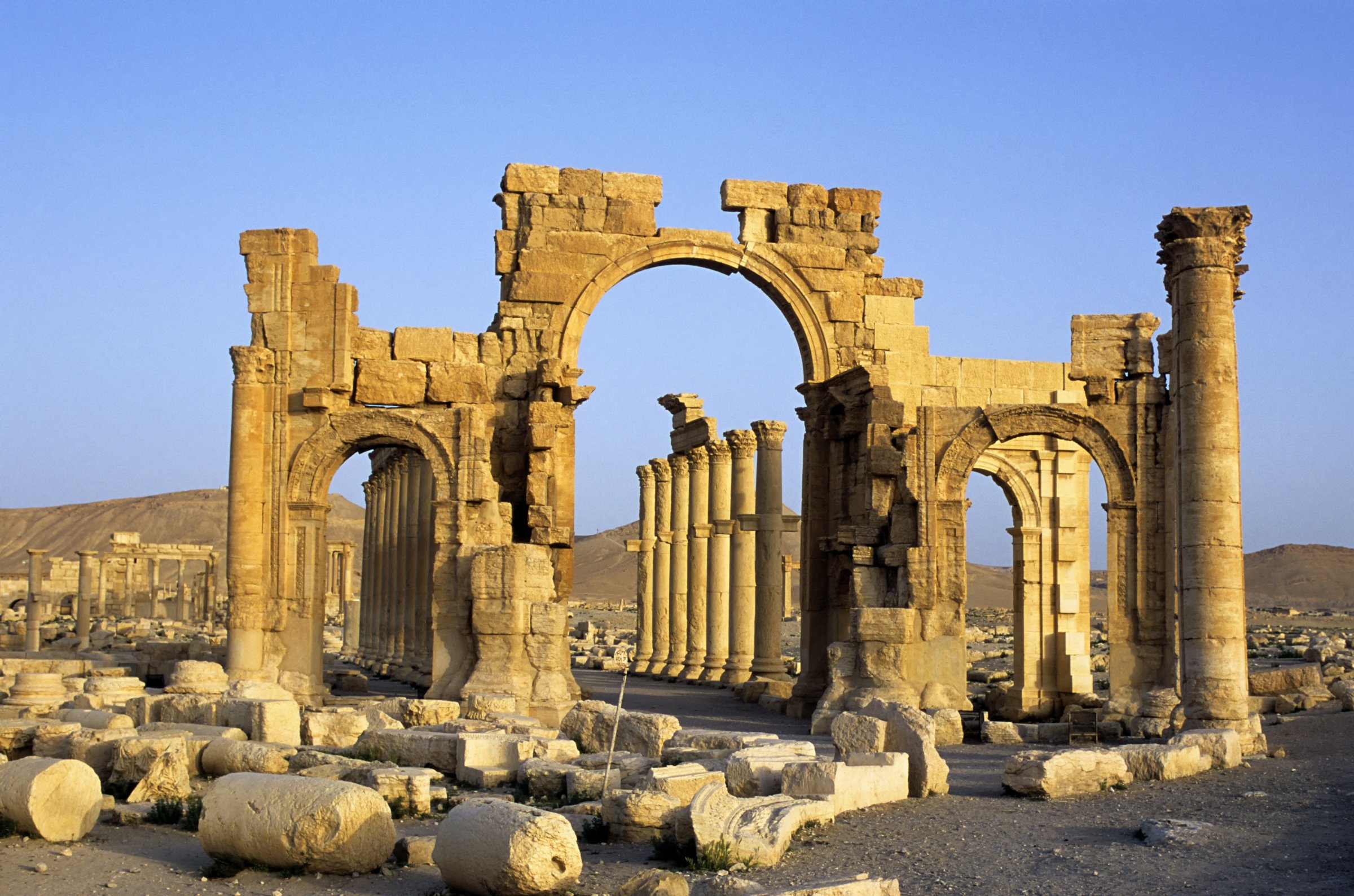
When ISIS occupied the UNESCO-designated World Heritage site city of Palmyra in Syria May 2015, the international community wondered what fate awaited these majestic ruins. Would they be pillaged for profit, fall victim to another cultural atrocity, or both?
The world did not have to wait long for its answer: In just 10 days, between the last week of August and the first week of September, the smaller temple of Baal Shamin, the grand temple of Bel and three funerary towers from the necropolis were blown up in what has become the hallmark signature of ISIS’s destruction of cultural heritage sites. Now, ISIS has destroyed yet another iconic landmark of Palmyra: the monumental arch know as the Arch of Triumph that stands at the entrance to the Grand Colonnade. Reports indicate that preparations are underway to destroy the amphitheater and the nearby Agora.
The main arch with its two smaller arches flanking it was originally built in the second century by the Roman emperor Septimius Severus to commemorate his victory against the Parthians. Images from a local activist show the top left side of the arch and the smaller arch associated with it have been completely destroyed, and all that remains standing is the right half of the main arch and the smaller arch to its right. The colonnade fortunately appears to be undamaged.
Why is ISIS destroying Palmyra’s major cultural heritage landmarks? The answer lies beyond the simplistic narrative of an extremist Islamist group with an iconoclastic approach to cultural heritage generally portrayed in the media. ISIS commits cultural heritage atrocities to shock the world, allowing ISIS to demonstrate its ability to act with impunity and illustrating the impotence of the international community to prevent them.
These atrocities along with others, such as the public executions of Westerners in orange jumpsuits, are part of a carefully crafted propaganda campaign by ISIS. The propaganda resonates well with ISIS’s narrow base of supporters and help bolster morale by reinforcing the ability to act with impunity while shocking the world and drawing attention to ISIS’s actions.
ISIS’s destruction of the site of Palmyra should be seen through the wider lens of events taking place in Syria today and the need for ISIS to respond to them. Russia recently launched its air campaign in Syria, and while most of its firepower has not been directed against ISIS targets, publicly the objective of Russian intervention is to destroy ISIS. Perhaps that is why ISIS felt compelled to respond to this and other challenges by destroying cultural heritage at sites like Palmyra.
Why should we care about the destruction of cultural heritage monuments in Syria? Once the current violence ends, the people of Syria will need to find ways to reconnect with symbols that once united them across religious and political lines. The country’s ancient past, represented in its rich cultural heritage, is key to this. Protecting and preserving Syria’s history and heritage is thus also about safeguarding its future.
More Must-Reads from TIME
- Cybersecurity Experts Are Sounding the Alarm on DOGE
- Meet the 2025 Women of the Year
- The Harsh Truth About Disability Inclusion
- Why Do More Young Adults Have Cancer?
- Colman Domingo Leads With Radical Love
- How to Get Better at Doing Things Alone
- Michelle Zauner Stares Down the Darkness
Contact us at letters@time.com